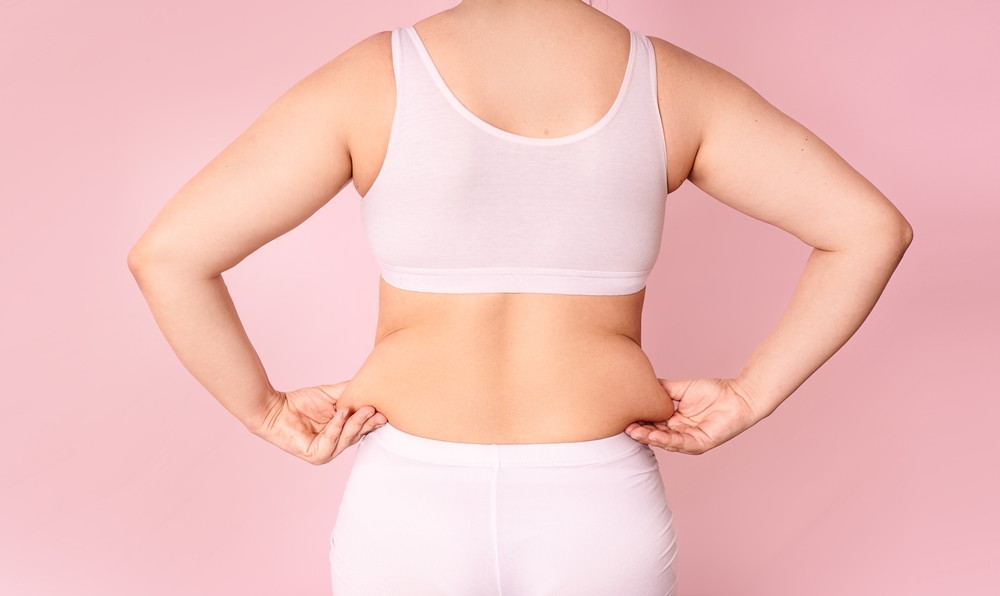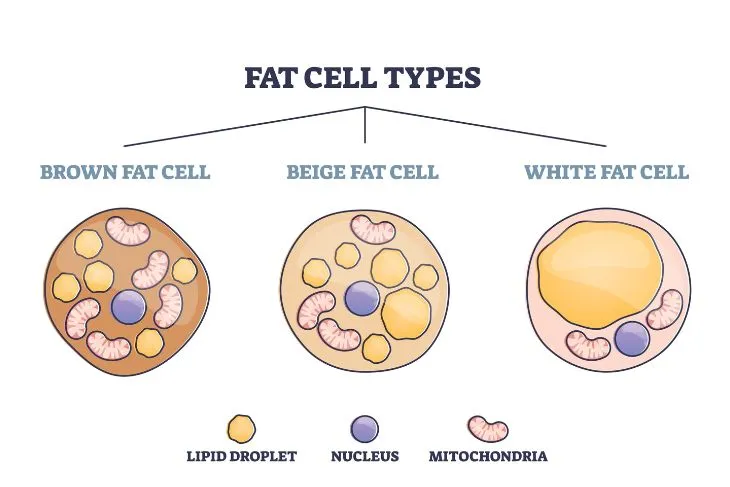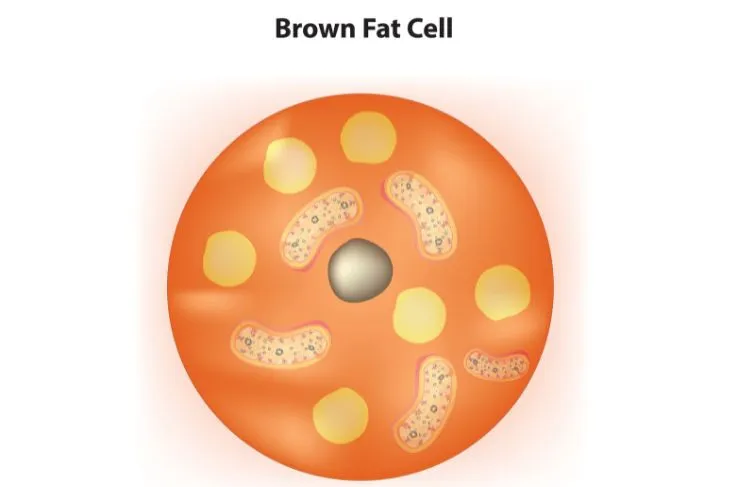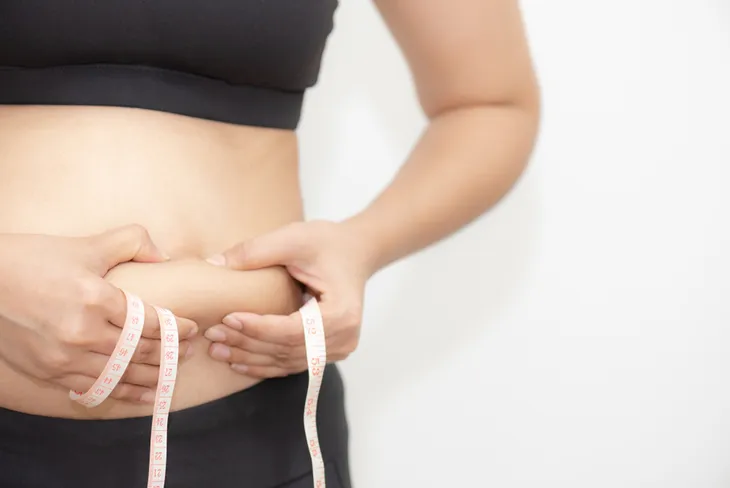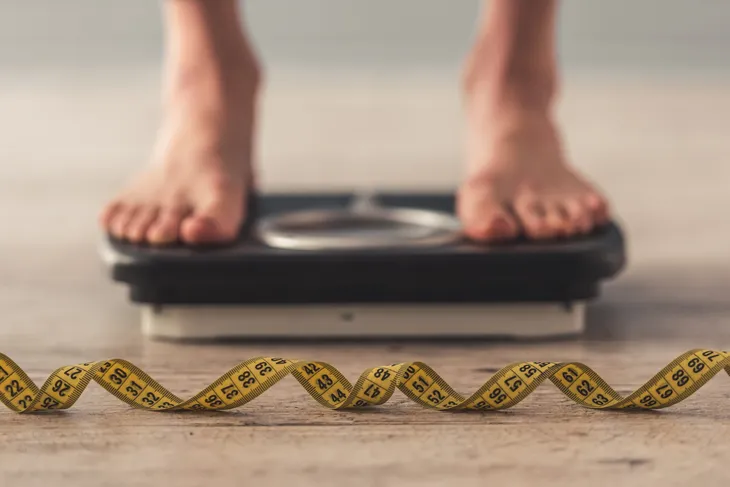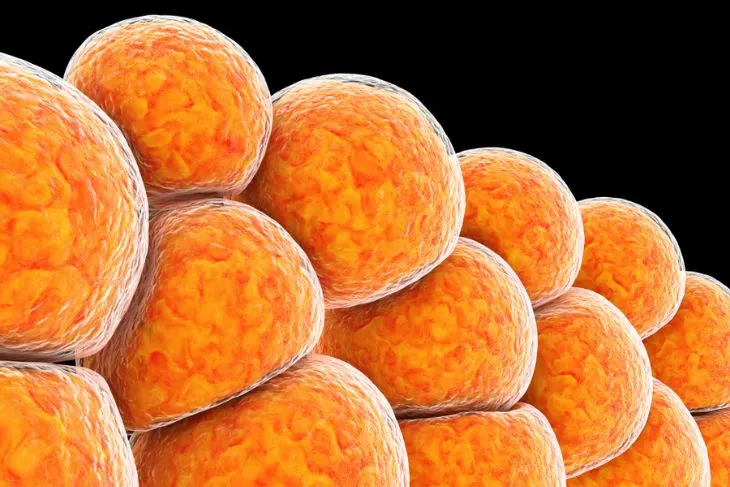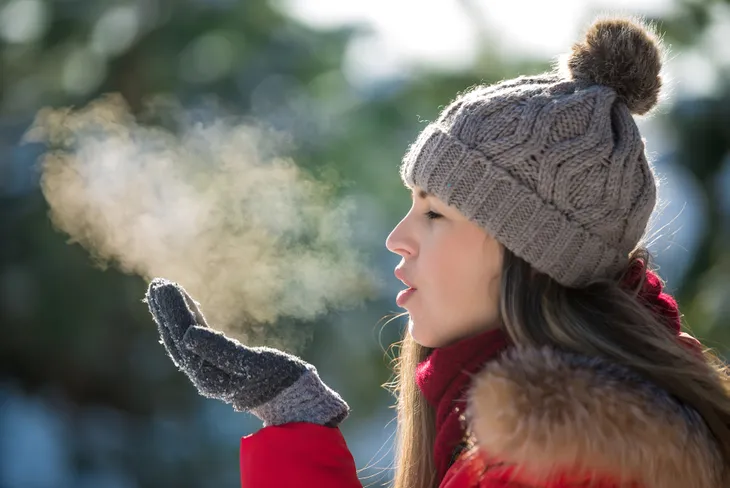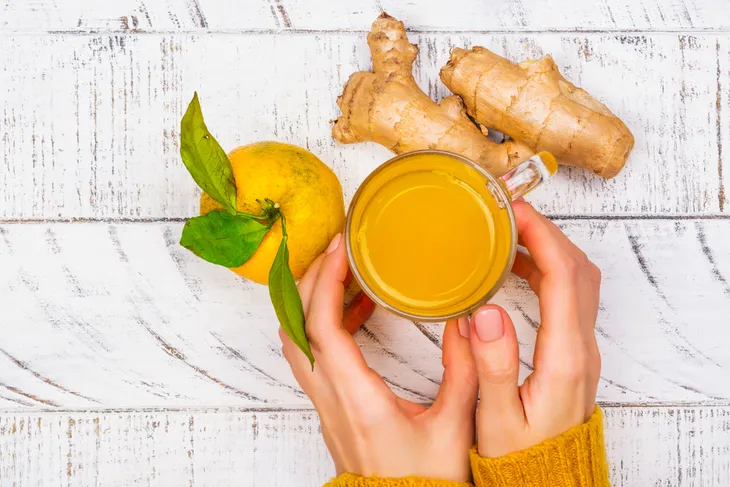- Brown adipose tissue (BAT) helps keep us warm, stores energy in the body, and is packed with iron-rich mitochondria.
- The way it produces heat is by breaking down blood sugar and molecules of fat. Basically burning calories to produce heat.
- Some research suggests potential benefits around brown fat’s ability to reduce the risk of type 2 diabetes and heart disease.
- We can activate more brown fat in the body through cold temperatures, exercise, and dietary changes.
Fat tends to be a “taboo” word that we all try to avoid — both literally and figuratively. Most people are either actively avoiding fat, trying to lose fat, or mindful of how much fat they are eating. But many don’t actually understand how fat works in the body or that there are even different types of fat.
Brown fat, also known as adipose tissue, serves a very important purpose in the body. It helps keep us warm when we get cold, stores energy in the body, and even helps the body burn calories! To learn more about brown fat, we’re exploring everything there is to know, including what it is, the potential benefits, how to build brown fat and its effects on our body…
Types of Fat in the Body (Brown Fat vs. White Fat)
There are two main types of fat in the body and both serve a different purpose. White adipose tissue (WAT) is the standard fat most of us know about. It accumulates around the body and stores energy in large fat droplets, explains Healthline. This accumulation of fat helps insulate our organs, however too much of it can lead to obesity. Particularly around the midsection, too much white fat can increase a person’s risk of heart disease, diabetes, and other diseases, warns the source.
Brown fat, also known as brown adipose tissue (BAT), stores energy in a smaller space than white fat and is packed with iron-rich mitochondria. This is where the dark brown color comes from. “When brown fat burns, it creates heat without shivering. This process is called thermogenesis,” writes the source. It’s also how brown fat burns calories.
What Does Brown Fat Do?
Brown fat isn’t necessarily bad. In fact, it serves a very important purpose in the body. It works to produce heat and warm the blood in our body, says the Cleveland Clinic. It kicks into gear during cold temperatures, right before we start shivering it will begin burning.
The way it produces heat is by breaking down blood sugar (glucose) and molecules of fat, explains the source. It basically burns calories to produce heat. This process occurs right before the body starts shivering and is known as thermogenesis. It also helps regulate sugar and fat metabolism.
What Does Brown Fat Look Like?
Aside from the obvious distinction which is the color, under closer examination, brown fat is made up of tiny molecules. If we go even deeper, these molecules are made up of fat cells, more specifically fatty acids and glycerol.
According to the Cleveland Clinic, “the anatomy of brown fat resembles muscle more than it resembles other fat in your body because the cells that store brown fat in tissues (adipocytes) are smaller.” When this fat collects in the body, the molecules lump together to create a mass that the sources describe as a “small, brown, lumpy oval.”
Why is it Brown and Where is it Located?
We’re able to tell the different types of fat apart by their appearance, more specifically their color. This also designates its function. The dark color of brown fat comes from the mitochondria. The fat cells in brown fat are full of mitochondria which is made up of iron, giving it its brown color, says the Cleveland Clinic.
Brown fat is most prominent in newborns and often located in the back, neck, and shoulders. The Cleveland Clinic explains that brown fat tends to dissipate as we age and grow, it scatters around the body. In adults, it’s mostly found around the neck, kidneys, adrenal glands, heart (aorta), and chest (mediastinum).
How Much Brown Fat is in the Body
There isn’t a standard amount of brown fat that every person has, it varies from person to person. Overall, people have less brown fat in their body than white fat, says the Cleveland Clinic. We have the most amount of brown fat as newborns. At this age, around 5-percent of our body weight is brown fat. Most of which is located around the upper back and around the shoulders.
Brown fat is higher in babies as a way to protect them from hypothermia, a drop in core temperature, explains Medical News Today. This is a serious concern for premature babies. Adults have less brown fat because we have a much larger surface area to cover with more muscle and the ability to move from cold areas, unlike newborns. “High levels of brown fat in newborns provides an alternative way to regulating heat,” writes Medical News Today.
Conditions That Affect Brown Fat
Since the amount of brown fat in our body is intrinsically linked to body fat tissue, there are several health conditions that can affect how much brown fat a person has in their body. Not only that, but also the body’s ability to activate brown fat. The following is the Cleveland Clinic’s list of conditions that affect brown fat…
- Anorexia Nervosa: causes extreme white and brown fat loss, affecting how the body produces energy and regulates temperature.
- Congenital Leptin Deficiency: a leptin deficiency occurs when fat cells don’t produce enough leptin hormone, increasing the risk of obesity.
- Lipodystrophy: affects the amount and distribution of fatty tissue in the body making it difficult to store energy from food.
- Lipoma: lumps of fatty tissue under the skin. This condition doesn’t cause pain or further health problems and the lumps of fatty tissue can be removed.
Potential Benefits of Brown Fat
Diabetes
There is some promising research around diabetes and brown fat because unlike white fat, brown fat burns glucose for fuel, says Everyday Health. There is even some research that suggests brown fat may influence metabolic health. For example a study published in The Journal of Nuclear Medicine found a correlation between brown fat and diabetes. “The researchers believe that a high level of brown fat activation may be an early warning sign that an individual might develop diabetes, although more rigorous research is needed,” writes the source.
Healthline refers to another 2015 review on various other studies that show brown fat burns calories and may help control blood sugar and improve levels of the hormone that regulates glucose in the blood, thus decreasing the risk of type 2 diabetes.
Heart Disease
Again, most of the research on this topic is very new and in the preliminary stages, but there is some evidence suggesting brown fat could reduce the risk of heart disease. A study published in Nature Medicine in 2021 found a correlation between brown fat and the risk of cardiometabolic disease, writes Everyday Health.
The people in this study not only had brown fat in their body, but an amount that was detectable by PET scans. As a result, they “had a lower risk of abnormal cholesterol, coronary artery disease, hypertension, and congestive heart failure,” writes the source.
How to Get More Brown Fat
Since brown fat does have some potential benefits to our overall health, researchers are looking for ways to naturally build brown fat in our body. Newborn babies tend to have a lot of brown fat on their body, but we lose it as we age. So as adults, we need to find creative ways to reactivate it.
Brown fat cannot be created, says Everyday Health, but there is some evidence to suggest we can activate it and that white fat may be oxidized. “It does appear that certain conditions may activate brown fat by signaling its mitochondria to burn calories and produce heat,” writes the source.
Decrease the Temperature
Brown fat activates in cold temperatures, right before we start shivering, so an easy way to build up brown fat is by turning down the temperature. Healthline explains that if we expose our body to cooler or cold temperatures we may be able to recruit more brown fat cells.
Research shows it only takes 2-hours of exposure each day to temperatures around 66-degrees Fahrenheit to turn fat brown. Healthline suggests taking a cold shower or ice bath, turn the thermostat down a couple degrees, or just go outside in cold weather to cool the body down and create more brown fat.
Exercise
Working out alone won’t create brown fat, but it might help oxidize white fat into ‘beige fat,’ says Everyday Health. “There is a correlation. between the level of physical activity you do and a better overall distribution of body fat, including the amount of brown fat,” says Jennifer Maeng, founder of Chelsea Nutrition in New York City when talking to the source. “Managing your overall body fat by working toward healthy weight goals will improve your overall fat distribution.”
There is some promising research that exercise may activate brown fat. Healthline references research on mice which suggests “a protein called irisin may help transform white fat to brown,” writes the source. This protein can also be found in humans.
Another 2016 study found that people who were less active produced less irisin than those who exercised. More specifically, these levels increase while doing intense aerobic interval training. However, there’s not enough research to say definitively that exercise creates more brown fat, adds Healthline.
Dietary Choices
Everyday Health references a review of studies that examine the effect of certain foods on thermogenesis (the warming process that activates brown fat). Although the review was done on rats, it found that turmeric, curcumin spices, foods with reservatrol, green tea, and spicy foods may activate thermogenesis and trigger the browning of white fat (oxidation).
The source references another review on rodents looking at how caffeine evokes BAT thermogenesis. While the research is helpful, the effects on human BAT are unclear. As a result, registered dietician, Kristen Smith tells Everyday Health she cannot suggest any dietary changes to activate brown fat. “It would be phenomenal if we could. But more research is needed before we can offer advice,” she adds.
